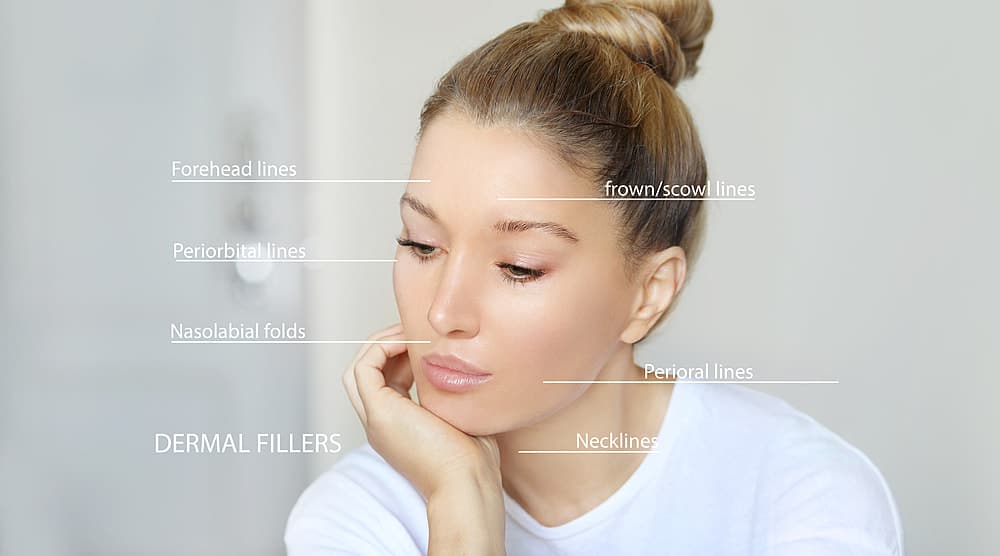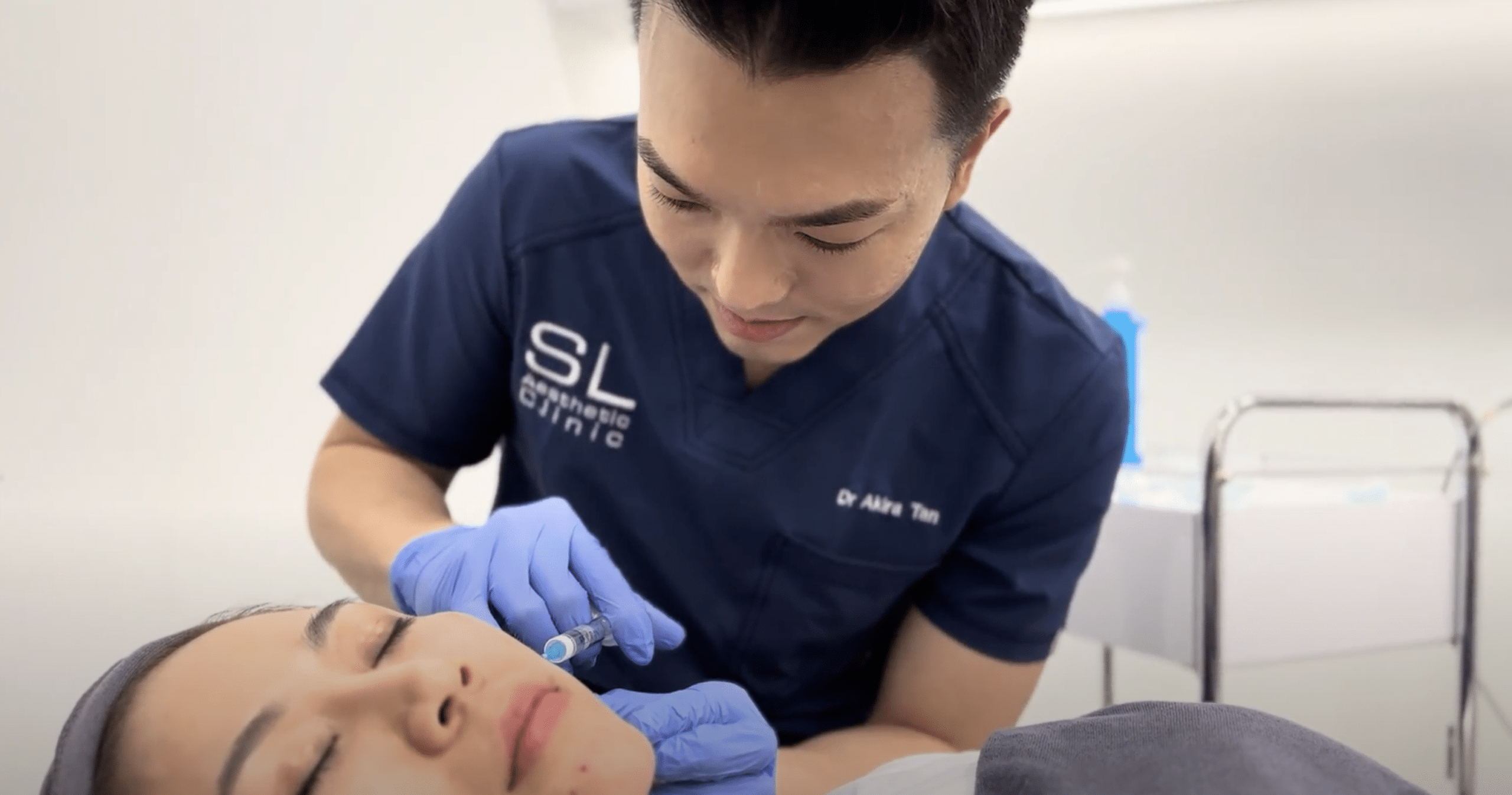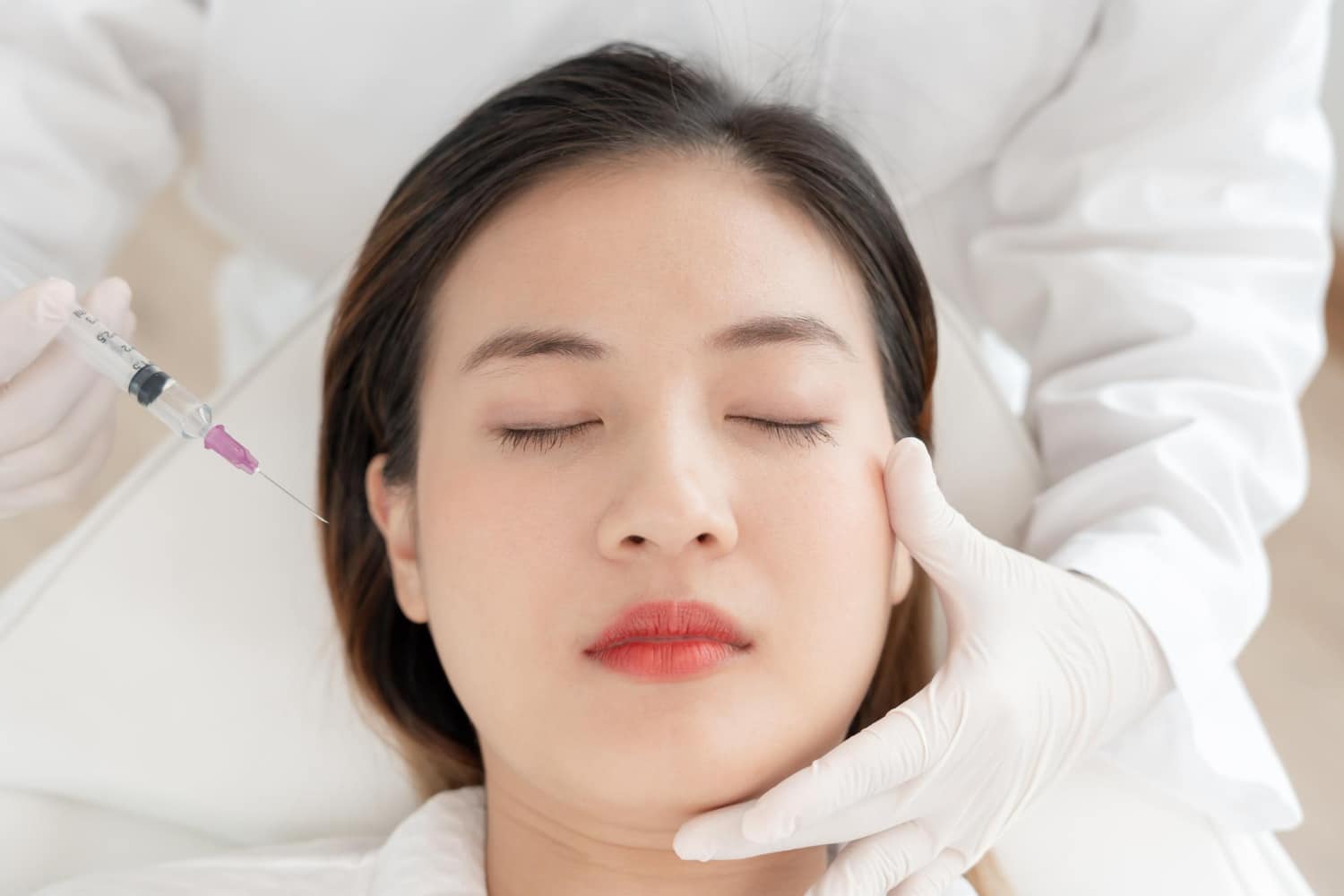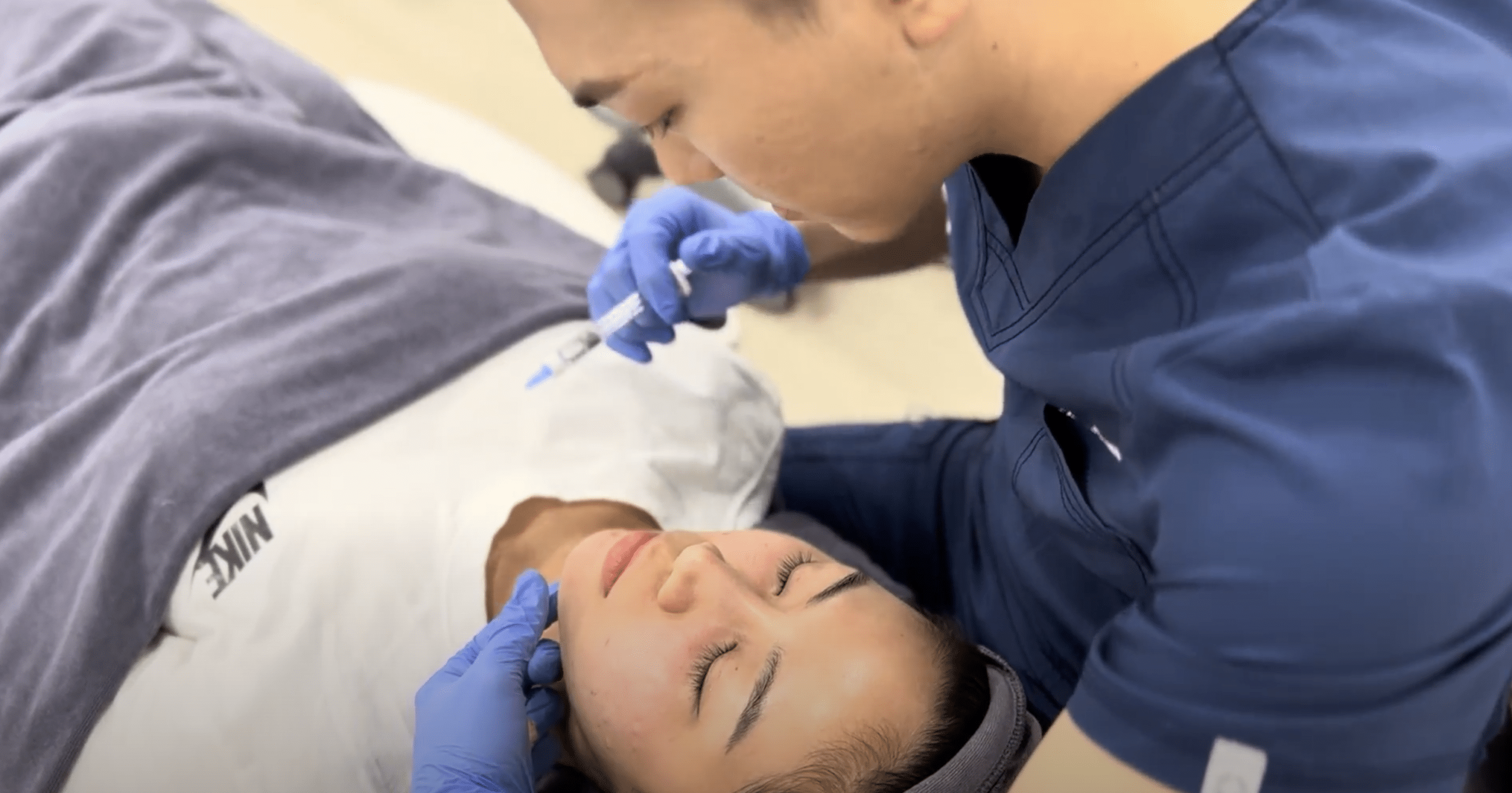
Dr Akira Tan: Are Dermal Fillers or Skinboosters Safer for Beginners?
- October 16, 2023


Stepping into the world of aesthetic treatments is an exciting yet deeply personal journey. Choosing between dermal fillers and skin boosters is like selecting the brush for your canvas of beauty — each piece/person will require a different brush/treatment.
Let us be your guide in this exploration, offering clarity and insights to help you make informed decisions with confidence to reveal your most radiant self.

Dermal fillers are injectable substances used in cosmetic treatments to add volume, contour, and to fill up wrinkles and lines in specific regions of the face. They are often used as a form of non-surgical face lift, but can also be used for regional applications such as to:
There are various categories of dermal fillers. They are usually divided into Permanent/Non-Permanent fillers based on whether they are degraded by the body. This is dependent on the primary ingredient in the gel.
| Hyaluronic Acid Fillers | Hyaluronic acid is a naturally occurring substance in the skin that helps bind and retain moisture.
HA fillers (e.g. Juvederm) are the most common type of fillers – they cause collagen synthesis and thus plump and fill the targeted area. They are naturally broken down by the body and in the event results are unsatisfactory, can be dissolved with an enzyme called hyaluronidase. |
| Collagen Stimulating Fillers | Calcium Hydroxylapatite Fillers (e.g. Radiesse): Made from a mineral-like compound found in bones, often providing a slightly longer-lasting effect than hyaluronic acid. However, they have issues with nodule formation, over-correction and fibrosis making future adjustments more difficult.
Polycaprolactone [PCL] Fillers (e.g. Ellanse) – Made of bioresorbable polymer which eventually break down and cause collagen growth. They present similar issues to Calcium Hydroxylapatite fillers. Poly-L-lactic Acid [PLLA] and/or Poly DL Lactide [PDLLA] Fillers (e.g. Sculptra, Aesthefill): Made from a biodegradable synthetic substance, this filler fills the space initially with their volume, but degrades soon after. Its main purpose is to stimulate the body’s collagen production to fill up lost volume. The results are more gradual but can last up to two years. |
| Collagen Fillers | Collagen fillers are derived from animal collagen; due to their low safety profile and lack of longevity they are no longer used much today. |
| Polymethyl Methacrylate [PMMA] Fillers (e.g. Bellafill) | Contains PMMA microspheres which cannot be broken down by the body. These spheres also cause collagen synthesis, but any errors or side effects cannot be reversed. |
| Polyacrylamide Gel [PAAG] Fillers (e.g. Aquamid) | Contains the same ingredient as those used to make soft contact lenses. PAAG fillers are banned in Singapore. |
| Autologous Fat Injections | This method involves taking fat from one part of the body and injecting it into the face. It’s a more invasive procedure and can provide long-lasting or even permanent results, but it requires a more complex process and recovery period. |
Fast Procedure
Getting dermal fillers is typically a fast procedure which involves;
Excluding consultation, the whole process takes less than 30 minutes. It is not entirely painless but very tolerable.
Immediate Results
A key benefit of using dermal fillers is its ability to contour and shape the face quickly.
When dermal fillers –especially hyaluronic acid based fillers–- are injected into targeted areas of the face, the substance within the filler begins to attract and bind water molecules.
This causes the filler to expand and fill the space beneath the skin’s surface, leading to an immediate plumping effect. When that effect is applied onto a wrinkle, fine line or more hollowed out area, the effects are noticeable soon after treatment.
Duration of Efficacy
Most modern dermal fillers are non-permanent, and the duration of their effects can vary widely. This will be based on factors like:
Sometimes combining dermal fillers with botulinum toxin treatment may serve to increase the lifespan of the filler.
Also Read: Skin Booster vs. Dermal Fillers: Which Is The Best For Anti-Ageing?

Skin boosters help to enhance the overall health and appearance of the skin, improving texture, radiance, and suppleness. They are used to rejuvenate the skin, offering a more subtle and ‘natural look’ after treatment.
They generally work via a combination of;
Biostimulation: Enhancing the collagen producing ability of fibroblast
Biorevitalisation: Direct addition of the building blocks required for or skin health into the skin
Regeneration: Refers to process of renewal, restoration and growth that makes genomes/cells more resilient to natural fluctuations
| Hyaluronic Acid Based Skin Boosters | Also known as traditional skin boosters, HA-based skin boosters refer to HA injected superficially into the skin to boost hydration and stimulate collagen.
An example of a popular HA skin booster is Profhilo — it contains a unique mix of high and low molecular weight HA and has anti-inflammatory effects. It also stimulates elastin to give some lifting effect. |
| Polynucleotide Based Skin Boosters | Polynucleotides are molecules extracted from fish DNA to target fibroblasts and promote collagen synthesis.
Examples of PN skinboosters are Rejuran/Nucleofill and Plinest, extracted from salmon and trout respectively. Both are biocompatible with skin — if you are allergic to fish, then unfortunately PN skinboosters will not be suitable for you. |
Fast Procedure
Skinboosters are performed similarly to dermal fillers.
Improved Skin Health
There are intricate differences between the various skin boosters which is out of the scope of this piece to discuss — but to generalise, common benefits include;
Gradual Results
The gradual results of skin boosters, as opposed to immediate effects of dermal fillers, are a result of the nature of the treatment and the way it interacts with the skin.
Whether it’s the hydration, collagen stimulation or skin rejuvenation, all these processes take time usually about 1-2 months to see full effects.
Unlike dermal fillers, which are injected into specific areas to fill or plump, skin boosters work on a broader level to nourish and rejuvenate the skin. The goal is not an immediate transformation but a subtle, ongoing improvement that leads to healthier, more vibrant skin over time.
Duration of Efficacy
After the initial series of skin booster treatments, the skin begins to show improvements in hydration, texture, and overall appearance.
However, these effects are temporary, as the body naturally metabolises the substances used in the treatment over time. To maintain the desired results, regular follow-up sessions are typically recommended.
The frequency and timing of these follow-up sessions can vary widely depending on individual factors such as;
For this section we shall focus on HA-based dermal fillers and skin boosters.
Both HA skin boosters and HA dermal fillers are very safe and well tolerated minimally-invasive procedures offering consistent good results. They have some similar mild side effects such as redness/swelling/bruising immediately post procedure which can last for a few days to 2 weeks.
Each also has the risk of infections especially if poor post-operative care was conducted, though the risk is low.
To address the elephant in the room, the recent news article about blindness after PDLLA Filler injection has caused much stir in the aesthetic community. The case of blindness was caused by the blockage of the blood supply to the eye from PDLLA material that was unable to be dissolved timely.

Even so, dermal fillers are very safe.
To date, the complication rate remains below 1%, with most of these being mild and transient reactions like redness and swelling. More serious side effects like blindness are also extremely rare and happen in less than 0.05% of injections. These risks can be reduced by the practitioner’s skills and knowledge of the facial anatomy and injection methods.
At SL Aesthetic Clinic, we adhere to practices such as aspirating before injecting, slow filler administration, and consciously avoiding higher risk areas. Our approach ensures either a deep bone injection or a very superficial one, avoiding the mid-layer vessels. We also prioritise using HA fillers as they can be dissolved if required unlike PDLLA fillers, which cannot be dissolved in the event of an emergency/error.
Both dermal fillers and skin boosters are safe and suitable for beginners. Ultimately the choice of which to proceed depends on whether you want to change your face structure or to increase overall hydration.
From my experience, often the new patient would find skin boosters more palatable as they do not result in drastic alterations of the face. Further, as HA-based skinboosters are injected very superficially into the skin, they are likely to have an even lower risk of causing an embolic event if injected by a skilled practitioner.
Additionally: Some skin boosters such as pure polynucleotide skin boosters have no risk of embolisation as they do not block off arteries even if accidentally injected into one.
Skin boosters and dermal fillers are great ways to get radiant, youthful skin. However, safe and effective use of them requires experience and knowledge.
For beginners who wish to get started on aesthetic treatments, consultation with an experienced doctor is absolutely necessary. Go in with an open mind and trust the process!
Like what you read? Share them!